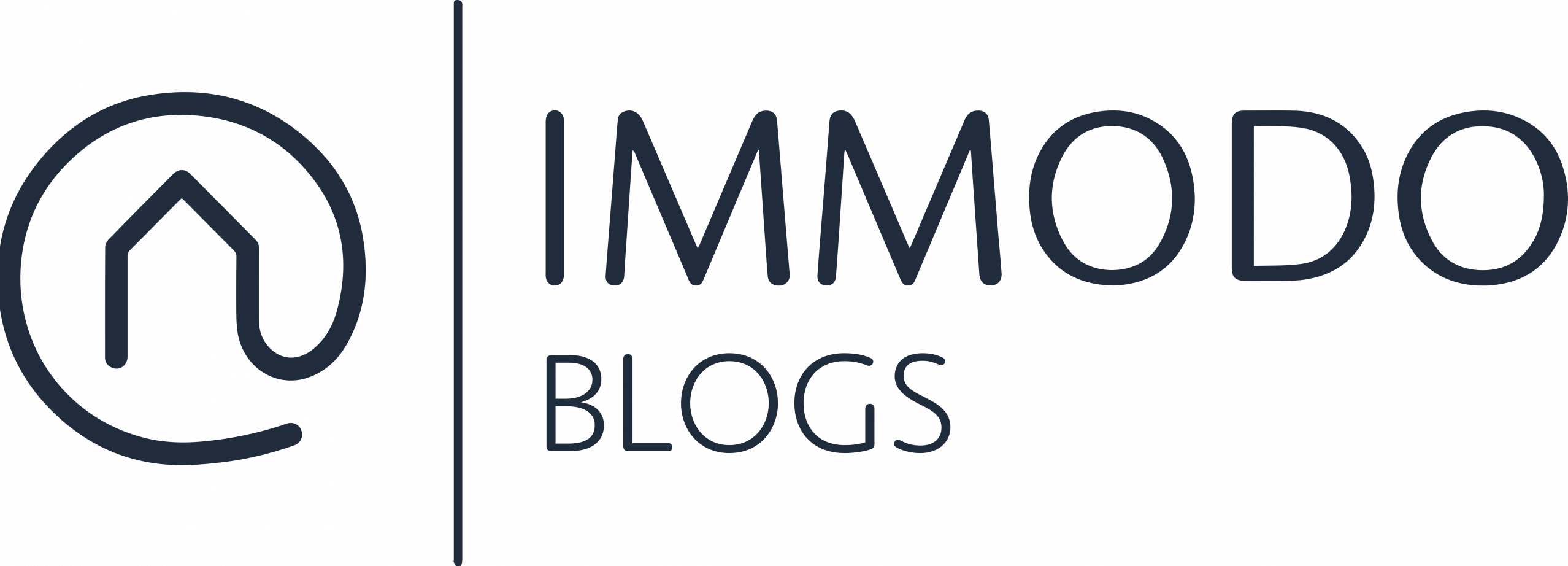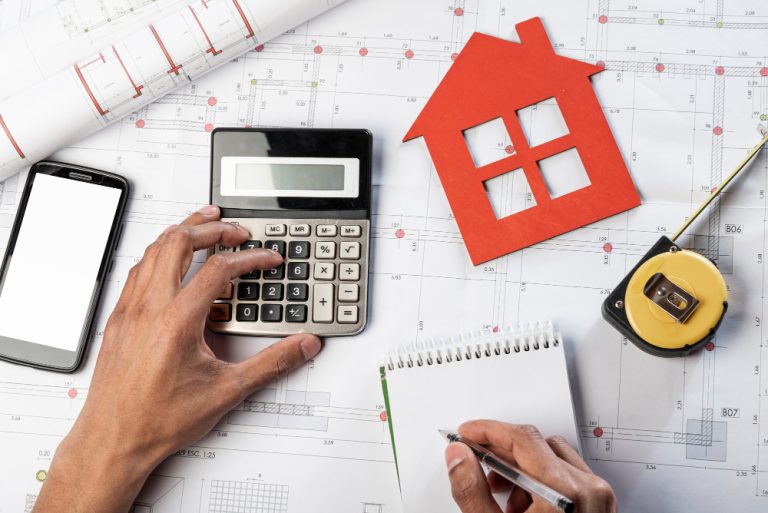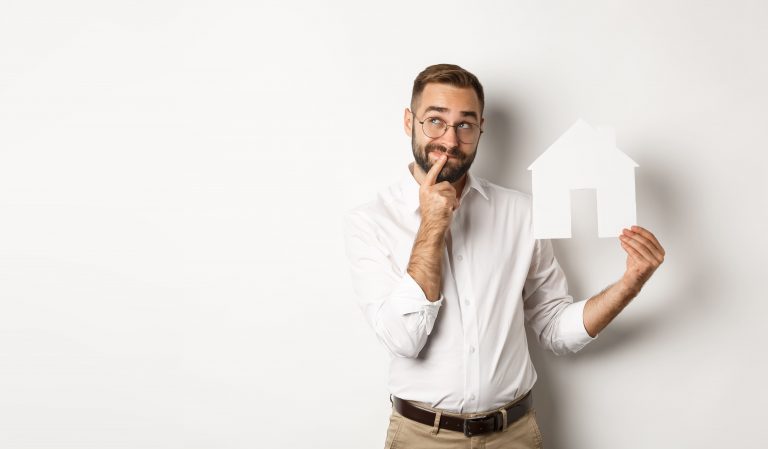Ever wondered where in Berlin you can combine urban flair, family-friendly calm and reliable long-term value? Buying an apartment in Schöneberg gives you just that, with everything from trendy cafes around Nollendorfplatz to leafy allotment gardens on your doorstep.
In this guide, you will learn which micro-neighborhoods match your budget and lifestyle, how to plan financing, closing costs and renovation needs, and how to avoid common legal pitfalls. Armed with practical insights, current market data and insider tips, you will stay one step ahead of other buyers.
Target Audience & Motivations for Buying an Apartment in Schöneberg
If you are thinking about buying an apartment in Schöneberg, you join a diverse community of buyers: young professionals drawn to the urban buzz, families seeking playgrounds and schools, and best agers who want to enjoy their retirement in a vibrant district.
In popular neighbourhoods like Nollendorfplatz or the Rote Insel, you pay on average around €6 347 per square metre for apartments and about €5 665 per square metre for houses and prices rose by nearly 2.4% over the past year, underscoring the strong demand.
I recently helped a couple secure their dream 50 m² pre-war flat at just €4 900 per square metre, while fixed mortgage rates are hovering around 3.6%.
Pro tip: For a 50 m² home at the current average price of €5 830 per square metre, plan on roughly €58 300 in equity to give yourself more negotiating power and better loan conditions.
👉🏼 For a step-by-step walkthrough on securing the best mortgage and sidestepping common first-time-buyer pitfalls, check out our guide on buy an apartment in Berlin.
Price Comparison: Schöneberg vs Berlin Overall
Average Prices
- Schöneberg: €6 140 per square metre (up 4.1% year on year)
- Berlin overall: €5 615 per square metre (Q1 2025 data)
Hotspot Prices
- Nollendorfplatz: around €6 347 per square metre
- Rote Insel: about €5 665 per square metre
About 39.1% of the district lies in heritage-protection zones and the condominium conversion ban in Tempelhof-Schöneberg runs until the end of 2025. These rules can affect your renovation plans and approval timelines.
Pro tip: Check the latest prices in your preferred micro-neighbourhood before each viewing so you know immediately whether it is the right moment to make an offer or if there is still room to negotiate.
A direct comparison of the most important micro-locations and key figures.
- Change (YoY) +4.10%
- Milieu Protection 39.1% of area
- Conversion Ban Until end of 2025
- Change (YoY) –
- Milieu Protection n/a
- Conversion Ban n/a
- Change (YoY) –
- Milieu Protection Partial
- Conversion Ban Until end of 2025
- Change (YoY) –
- Milieu Protection Partial
- Conversion Ban Until end of 2025
Berlin Price Explorer
Select a district to see the average price per m² for its neighbourhoods.
- Mitte 7,411 €/m²
- Moabit 5,327 €/m²
- Hansaviertel 6,133 €/m²
- Tiergarten 8,175 €/m²
- Wedding 5,000 €/m²
- Gesundbrunnen 4,364 €/m²
- Friedrichshain 6,567 €/m²
- Kreuzberg 6,611 €/m²
- Pankow 5,250 €/m²
- Prenzlauer Berg 6,700 €/m²
- Weißensee 5,000 €/m²
- Charlottenburg 6,553 €/m²
- Wilmersdorf 6,102 €/m²
- Schmargendorf 5,800 €/m²
- Grunewald 6,509 €/m²
- Westend 6,000 €/m²
- Halensee 5,630 €/m²
- Spandau 4,007 €/m²
- Staaken 4,128 €/m²
- Gatow 4,419 €/m²
- Kladow 4,298 €/m²
- Haselhorst 3,800 €/m²
- Siemensstadt 3,900 €/m²
- Hakenfelde 3,754 €/m²
- Steglitz 5,288 €/m²
- Lichterfelde 4,992 €/m²
- Lankwitz 4,596 €/m²
- Zehlendorf 5,569 €/m²
- Nikolassee 5,749 €/m²
- Dahlem 6,127 €/m²
- Wannsee 5,500 €/m²
- Tempelhof 5,000 €/m²
- Schöneberg 6,022 €/m²
- Mariendorf 4,500 €/m²
- Marienfelde 4,300 €/m²
- Lichtenrade 4,183 €/m²
- Neukölln 4,720 €/m²
- Britz 4,363 €/m²
- Buckow 4,100 €/m²
- Rudow 4,000 €/m²
- Gropiusstadt 3,705 €/m²
- Alt-Treptow 5,204 €/m²
- Plänterwald 5,000 €/m²
- Baumschulenweg 5,153 €/m²
- Johannisthal 4,720 €/m²
- Niederschöneweide 4,800 €/m²
- Oberschöneweide 4,900 €/m²
- Köpenick 4,762 €/m²
- Friedrichshagen 5,577 €/m²
- Rahnsdorf 5,000 €/m²
- Grünau 5,438 €/m²
- Müggelheim 4,800 €/m²
- Bohnsdorf 3,808 €/m²
- Adlershof 5,191 €/m²
- Marzahn 3,730 €/m²
- Biesdorf 4,014 €/m²
- Kaulsdorf 4,248 €/m²
- Mahlsdorf 4,789 €/m²
- Hellersdorf 3,829 €/m²
- Lichtenberg 5,138 €/m²
- Friedrichsfelde 5,753 €/m²
- Karlshorst 5,523 €/m²
- Rummelsburg 5,500 €/m²
- Fennpfuhl 4,694 €/m²
- Alt-Hohenschönhausen 5,029 €/m²
- Neu-Hohenschönhausen 4,800 €/m²
- Reinickendorf 4,223 €/m²
- Tegel 4,270 €/m²
- Konradshöhe 4,068 €/m²
- Heiligensee 4,923 €/m²
- Frohnau 4,126 €/m²
- Hermsdorf 4,387 €/m²
- Waidmannslust 4,300 €/m²
- Lübars 4,200 €/m²
- Wittenau 4,329 €/m²
- Märkisches Viertel 4,514 €/m²
- Borsigwalde 4,428 €/m²
📖 Kreuzberg is one of Berlin’s most sought-after districts, but it’s also one of the most regulated. Our guide explains everything you need to know before buying property in Kreuzberg, from checking the WEG documents to spotting a good deal.
Schöneberg vs Berlin Market Comparison
Competition and Market Trend
The housing market in Schöneberg is noticeably more competitive than Berlin overall. While average property prices across the city rose by 1.6% in the first half of 2025, Schöneberg outpaced that with a 2.4% increase. This is a strong signal that demand here is especially high while supply remains limited.
Outlook Through 2026
Real estate experts expect prices for existing apartments in Germany’s major cities to continue rising in the coming years. According to a recent Reuters survey, the forecast is a 3% increase in both 2025 and 2026.
What this means for you as a buyer: If you are planning to buy an apartment in Schöneberg now, keep in mind not just today’s price but also the value development expected over the next one to two years. This gives you the best chance to benefit from long-term appreciation by 2026.
Pro tip: Track price trends regularly and define a clear limit for your maximum bid. That way, you avoid overpaying in a hot market while staying ready to act when the right opportunity appears.
Micro-Neighborhood Portraits in Schöneberg with Price Breakdown
Nollendorfplatz: Scene Hub and Single Hotspot
If you are considering buying an apartment at Nollendorfplatz, you will find yourself in one of Berlin’s most vibrant quarters. Trend cafés, designer boutiques and coworking spaces sit side by side, drawing young singles and creatives.
Here, top pre-war apartments go for around €6 100 per m²; about 20% above Schöneberg’s average of €5 076 per m² (Q4 2022 data).
Your daily commute is a breeze: four U-bahn lines (U1, U2, U3 and U4) converge at Nollendorfplatz, making it easy to dash to work in the morning and dive into the nightlife after hours.
Bayerisches Viertel: Family Charm and Old-World Character
When you plan to buy in the Bayerisches Viertel, you choose one of Schöneberg’s quietest yet most charming corners. Tree-lined avenues around Bayerischer Platz and well-preserved late-19th-century buildings set the scene for family life.
Average prices for existing apartments are about €5 950 per m², just above Schöneberg’s €5 830 per m² average but with more space for prams and playrooms. Local parents praise the abundance of playgrounds, preschools and organic grocers, and the short, safe walk to Goethe-Gymnasium is a particular highlight.
Estimate the total renovation budget including a 20% safety buffer.
Rote Insel: Peaceful Island with Community Spirit
If you look at buying on the Rote Insel, you will discover Berlin’s best-kept secret. Encircled by railway tracks, this micro-neighborhood feels like its own tranquil island, ideal for anyone who wants to escape the city’s hustle and bustle.
Average prices here are about €5 665 per m², 8% below the Schöneberg average, offering real value. Once a workers’ district, today you will meet families, artists and commuters in equal measure.
Cherusker Park’s two hectares of green space invite picnics and yoga sessions, and in summer, backyard gatherings and “Punk in Tour” walks bring neighbors together. Keep an eye on local Facebook groups for off-market listings before they hit the portals.
Akazienstraße: Neighborhood Culture and Market Vibe
Deciding to buy on Akazienstraße means diving into one of Schöneberg’s liveliest quarters. Cobbled streets, intimate cafés and the famed Winterfeldtplatz market define the area.
Average prices for existing flats are around €5 700 per m², just under Schöneberg’s €6 140 per m² average. Every Wednesday and Saturday, more than 200 stalls transform Winterfeldtplatz into a vibrant showcase of fresh produce, regional specialties and designer finds; an ideal way to immerse yourself in the local scene.
Schöneberger Norden: Urban Mix and New-Build Boom
Exploring northern Schöneberg reveals an exciting blend of old-world apartments and sleek new developments. The recently refurbished Bundesallee buzzes with cafés and boutiques, and proximity to Tiergarten plus excellent S-bahn and bus links keep you flexible.
Existing flats here average about €5 400 per m², while new projects near Julius-Leber-Platz or in the “Schöneberger Linse” start at around €6 500 per m². Families value the quiet side streets, and young professionals love the spacious loft-style layouts, making this area a hotspot for both lifestyle and long-term value growth.
Building Types & Renovation Restrictions

Historic Pre-War Apartments
If you love original architectural details, a pre-war apartment from Berlin’s Gründerzeit era will delight you with spacious rooms, high ceilings and ornate stucco work. These features date back to around 1900 when decorative plaster was cast in elaborate moulds.
However, about 30% of these apartments in Tempelhof-Schöneberg lie within heritage-protection zones. That means any façade work, repainting or insulation additions require formal approval from the district office in advance. Window alterations and colour changes must be submitted for review or you risk fines and mandatory restoration.
To keep your renovation on track, budget not only for contractor fees but also permit charges and set aside four to six weeks for approvals. That way, you preserve the historic charm of your home without unexpected delays.
Post-Reunification New Builds & Renovation Projects
Modern post-reunification apartments offer open layouts, elevators and the latest building services; ideal if you prefer move-in-ready living. Prices around Julius-Leber-Platz currently range between €6 000 and €7 000 per square metre, depending on finishes and energy ratings.
Bear in mind that some renovation developments fall under landmark-protection regulations. If your favoured building sits in a protected zone, even window replacements or minor façade adjustments can trigger extra requirements. Always check before viewing whether a property lies in a landmark area. That lets you avoid bureaucratic hurdles and focus on settling into your new modern home.
Condominium Conversion Ban until End of 2025
Schöneberg remains subject to a condominium conversion ban that runs through December 2025. Nearly 20% of the housing stock cannot be converted from rental to owner-occupied units to protect tenants. As a result, many existing apartments remain on the rental market and rarely appear for sale.
Developers have responded by planning new-build projects exclusively as owner-occupied units. This trend drives new-build prices to around €6 500 per square metre for modern developments. The gap between limited conversion offerings and booming new construction keeps the market dynamic. To find your ideal home, focus on off-market listings and freshly completed projects.
👉🏼 Want to understand how Berlin’s transfer tax, annual property taxes and deductible renovation costs impact your deal? Dive into our comprehensive real estate tax in Germany guide for crystal-clear explanations and money-saving strategies.
Community & Demographics in Schöneberg, Berlin
International Flair & Single Households
Schöneberg is home to an impressive 54.4% single households, so many apartments are cleverly laid out, starting as compact 30–45 m² spaces, ideal for an efficient combined living, sleeping and kitchen zone.
At the same time, 36% of residents have a migration background, giving the neighbourhood a true multicultural atmosphere. You will find international grocery stores, community cafés and cultural events around every corner.
This blend drives demand for flexible co-living concepts with shared work-and-relax areas, modular furniture and smart-home features that make everyday life easy and social.
If you know this trend, you can target listings that offer both clever floor plans and communal spaces. That way, you become part of a vibrant community and avoid costly later renovations.
Family & Age Structure
In the Bayerisches Viertel, you immediately sense the family focus: around picturesque Bayerischer Platz, you’ll find at least five day-care centres and three primary schools all within walking distance—perfect for families who value short school runs. Many parents praise the stress-free routine: walking to Goethe-Gymnasium or Paul-Gerhardt-Kirche-Schule takes no more than five minutes.
By contrast, Nollendorfplatz attracts the creative startup scene. Within a one-kilometre radius, you’ll discover over ten coworking spaces, from large chains like Mindspace to local hubs such as Betahaus. Just imagine grabbing your morning coffee around the corner and opening your laptop in the same neighbourhood.
Armed with this knowledge, you can quickly spot in property listings whether a neighbourhood matches your lifestyle, whether you prefer a quiet, family-friendly setting or the energetic networking vibe of an urban hotspot.
Legal Pitfalls & Planning in Schöneberg
A brief overview of the local population structure.
Heritage Protection Zones
An invisible protection network covers many streets in Schöneberg: about 39.1% of the area falls under heritage protection. This includes zones around Barbarossaplatz, Bayerischer Platz, Kaiser-Wilhelm-Platz, the Schöneberger Insel, northern Schöneberg, as well as the quarters around Wittenbergplatz and Grazer Platz.
What this means for you is that any change, whether you replace old windows, install new flooring or refresh exterior paint, requires prior approval from the district office under Section 172 of the German Building Code.
Without a permit, you may face fines or even be ordered to restore the original condition.
Before you book any viewings, make sure to consult the official heritage protection map at the City Development Office. That way, you avoid nasty surprises, save time and keep renovation costs under control.
Condominium Conversion Ban and Purchase Process
Schöneberg is subject to a ban on converting rental apartments into condominiums until the end of 2025. If you wish to buy a unit in a building under this rule, you must secure an official resolution from the owners’ association. Since the December 2020 reform of the Condominium Act, all meetings are quorate and only a simple majority is needed to pass resolutions under Section 25 of the Act.
In practice, this means you must allow at least two weeks from the date of your application before the owners’ meeting can take place. After the vote, expect another two to four weeks for the new declaration of division to be registered in the land register and become effective. Plan for a total of four to six weeks from your first application to entry in the land register.
This clear process lets you budget for application fees, meeting minutes and notary costs without unexpected delays.
Building Code and Monument Protection
Many pre-war buildings in Schöneberg are listed monuments. If you want to remove interior walls, install new wiring or repaint the façade, you generally need a monument protection permit and often an additional building inspector’s approval. Your first step is to submit a detailed application to the State Office for Monument Preservation, including material samples and a colour concept. Allow six to eight weeks for processing.
By contrast, purely interior refurbishments in non-protected areas usually require only a simple building notification, provided you check in advance with the District Building Office, which documents they need.
Following these steps helps you avoid expensive follow-up requests and lets you modernise your historic home smoothly, from initial sketch to final coat of paint.
👉🏼 Looking for a trusted local English-speaking partner knows every Schöneberg street? Explore our roundup of the top 10 real estate agents in Berlin for 2025 to find the expert who’ll turn your search into success.
Conclusion
In summary, when buying an apartment in Schöneberg, you now have a clear market overview, precise micro-neighbourhood insights and practical tips on financing, building types and legal pitfalls.
Whether you choose the vibrant Nollendorfplatz, the family-friendly Bayerisches Viertel or the leafy allotment garden districts, you know exactly what matters for budget, lifestyle and future value. From renovating a protected historic flat to evaluating the latest new-build developments, our advice gives you the confidence to make a successful purchase.
Do you have any questions or would you like a personalised strategy for your apartment search? Our experts are available free of charge by phone or WhatsApp 24 hours a day, seven days a week!
FAQ
The average price is currently about €5,579 per m² (Engel & Völkers Q1/2025) to €5,184 per m² (Immobilienscout24 Atlas Q1/2025).
Budget around 10–12% of the purchase price for property transfer tax (6%), notary and land registry fees (approx. 1.5%), plus agent commission (up to 3.57%).
From proof of financing and reviewing exposés to viewings, notary appointment and key handover—it typically takes about 3–4 months in total.
Experts recommend at least 20% equity plus funds for additional costs to secure favourable interest rates.
Programmes like the KfW Home Ownership Scheme 124 or the Efficiency House Loan 261/262 offer low-interest loans and grants of up to €27,500.
About 39.1% of the area is under heritage protection; renovations require permits (Section 172 BauGB). The condominium conversion ban until end of 2025 restricts converting rentals into owner-occupied units.
Nollendorfplatz for singles (approx. €6,300/m²), Bayerisches Viertel for families (approx. €5,950/m²) and Rote Insel for community seekers (approx. €5,665/m²).
Local agent networks, Facebook groups and neighbourhood events are the best sources for properties not yet listed online.
In winter (January/February) prices are often 3–5% lower due to lower competition and sellers eager for quick deals.
No, but a local agent provides access to exclusive off-market deals and negotiation support (commission up to 3.57%).




